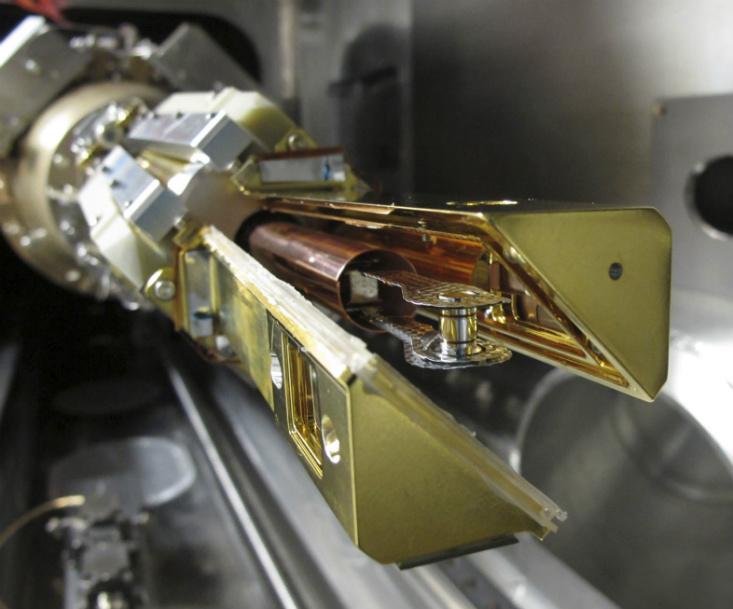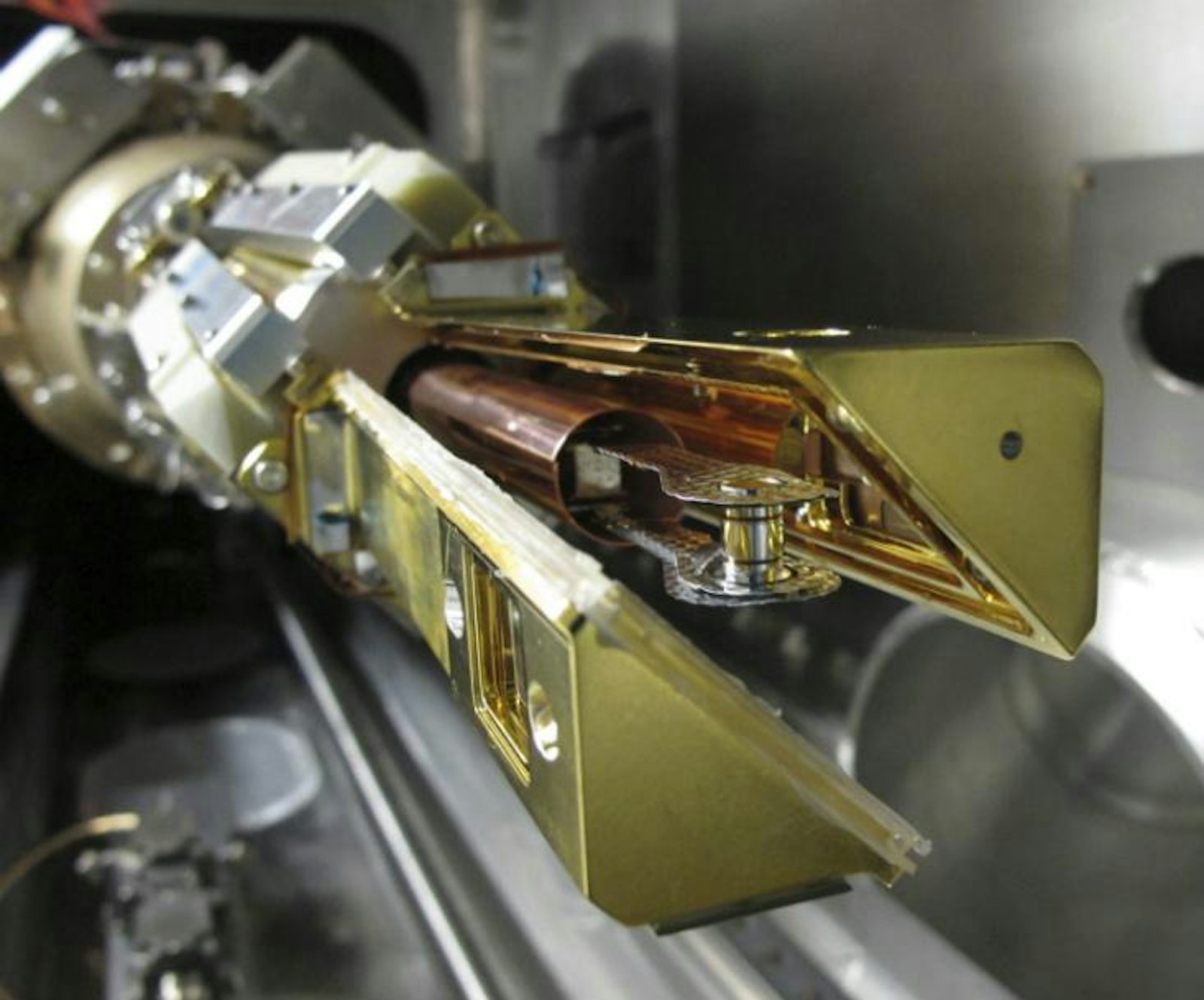
It’s the poetry of fusion that draws us in. There in the heart of a star, in the welter of plasma, we find creation. In mindboggling heat and pressure, hydrogen atoms crash together and fuse to become helium, and the process shines light into a dark universe. Who wouldn’t be charmed when Carl Sagan reverently describes how fusion makes “the stars turn on”? And who can resist the audacious idea of creating a miniature sun here on Earth, and using nuclear fusion reactors to make human civilization shine brighter?
Perhaps you heard the encouraging news recently from the National Ignition Facility (NIF), the $3 billion fusion experiment in California. Scientists announced that by blasting a peppercorn-sized sphere containing hydrogen atoms with the world’s most powerful lasers, they had caused controlled fusion reactions that put out more energy than they had put into the sphere. But the researchers where quick with the caveat: They have not achieved “ignition,” the long-awaited moment when the fusion reaction will generate more energy than is put into the experiment as a whole (its 192 lasers, for example, require a lot of juice—about 1,000 times as much power as the entire U.S. does in an average moment). They estimate that only about one percent of the experiment’s total energy actually winds up in the sphere.
Mastering ignition is clearly necessary if we want to build fusion power plants to generate electricity. Yet some experts doubt whether the NIF will pull it off, and many say even if ignition is achieved in a lab setting, fusion reactors will never be economically feasible: A successful power plant would have to not only set off that energy-producing reaction ignition, but also repeat it many times a second, and then safely and efficiently harness the energy released, for example. Considering the enormous obstacles, it may be time to shift some attention away from poetry and examine a more prosaic approach: nuclear fission, the splitting of atoms, the same process that powers our flawed, current-day nuclear reactors.
Fusion-energy proponents note that the process carries little risk of nuclear proliferation—its fuel is hydrogen isotopes that are found in water. The process creates almost no radioactive waste, as its end products, helium and neutrons, aren’t radioactive (although some waste can be created by fusion products interacting with reactor walls). A fusion reactor wouldn’t melt down if power was lost, as happened at Fukushima Daiichi; instead the reaction would naturally come to a halt. Powerful merits, all. But fission reactor designs have diversified and advanced dramatically in recent decades. The new designs, say advocates, can match nuclear fusion, merit for merit.
The most practical designs for so-called Generation IV nuclear reactors were identified more than a decade ago, and various countries and industrial behemoths are creeping toward construction. These designs build on physics, economics, and licensing that we well understand, and they have their own solutions to the proliferation, waste, and safety issues.
Jessica Lovering, an analyst with the data-driven environmental group Breakthrough Institute, made a thorough survey of advanced nuclear concepts (including fusion) for a recent report she coauthored, “How to Make Nuclear Cheap.” She sees a path forward in incremental steps, starting with a Gen IV design that doesn’t require radical changes to the nuclear industry. “I think the advanced slow reactors are going to come first,” she says, referencing nuclear reactors that use a moderator to slow down neutrons and enable fission reactions, like all nuclear power plants in use today. “China just put a huge chunk of money and hired hundreds of people to work on molten salt reactors. I think that’s probably going to come first—and it’s going to come from China,” she says.
From there, she foresees a worldwide shift to fast reactors that are fueled with reprocessed nuclear waste or warheads. That will take time, because it requires “closing the fuel cycle” with the creation of fuel recycling infrastructure. (Perhaps there is some poetry in this approach: these newer fission reactors would use up and render harmless the nasty nuclear waste produced by older fission reactors.) Lovering notes that many of these fast-reactor designs have passive safety systems that shut down the fission reaction naturally in the event of an emergency, and that generate only small amounts of waste that’s not highly radioactive. “If we get Gen IV we’ll have big improvements,” she says. “I personally think that’s good enough, especially if you close the fuel cycle.”

China has reportedly put $400 million into its molten-salt-reactor program. But here in the United States, a plucky startup currently with $1 million to its name, a pittance in the field of power generation, is working on a molten salt design of its own. Transatomic Power was first thought up by two nuclear engineering PhD students at MIT, and its founders are now trying to raise $15 million for a round of experiments to validate its design. If those experiments prove out, they hope to build a small demonstration plant at a national lab site.
Ray Rothrock, one of Transatomic’s investors, says the company’s technology won’t take breakthroughs in physics to get one of the company’s reactors up and running. “We could demonstrate a Transatomic prototype within three to five years, and for $100 to $150 million.” And Rothrock says the company’s molten salt reactor, which can be fueled with nuclear waste or fresh uranium at low enrichment levels, has a strong business case. The company asked Burns and Roe, an industrial firm that has been involved in nuclear engineering since the 1960s, to review its concept design, and got a solid thumbs-up.
A number of other innovative approaches are being developed for small modular reactors, which could be relatively cheap and easy to build. With advanced fission designs coming along so swiftly, it may well make more sense to carry on gradually improving this proven technology, rather than make the dramatic leap to fusion energy. At the moment, this fission trajectory seems capable to bringing us through many decades, perhaps the rest of the century. Nuclear fusion requires so much expensive experimentation to demonstrate its effectiveness that our society may decide it’s just not worth it.
But fusion-energy devotees are still full of bold talk and big ideas. NIF is home to the LIFE project, a much-publicized effort to design a power plant that uses nuclear fusion. Lovering says researchers there are preparing for a day after NIF has achieved ignition, when a commercial power plant will enter the realm of the possible. “They’ve met with utility executives and environmental groups and all sorts of people across the industry, asking, ‘What would you want from a fusion power plant?’” Lovering says. Meanwhile, a group of prominent nations has begun construction on ITER, a big fusion facility in the south of France aimed exclusively at drawing energy from fusion.
And Rothrock actually has two nuclear power investments: In addition to Transatomic, he has also put money into a highly secretive nuclear-fusion startup in southern California, Tri-Alpha Energy. Rothrock insists that investing in nuclear fusion isn’t quixotic or philanthropic, but rather a real profit-seeking endeavor. “We’re still proving out the scaling, proving the economics to make electricity, but the trend lines are going in the right direction,” he says. It may take some time for fusion energy to catch on, admits Rothrock. It won’t be a “barnburner” that takes over the world in his lifetime, and maybe not even in his grandchildren’s lifetime. It took decades, he notes, for fission reactors to grow from national lab experiments to full-fledged industrial powerhouses, and the engineering challenges of fusion reactors are far greater. Still, he avows, fusion is a long-term answer to our planet’s energy woes.
The LIFE-ers, the Tri-Alpha mystery men, and Ray Rothrock all seem convinced that they can make a little sun here on Earth, and that they can profitably employ that fusion reaction. Are they silly to believe? Is it crazy to wish upon a star?
Eliza Strickland is an associate editor for the science and technology magazine IEEE Spectrum.






























